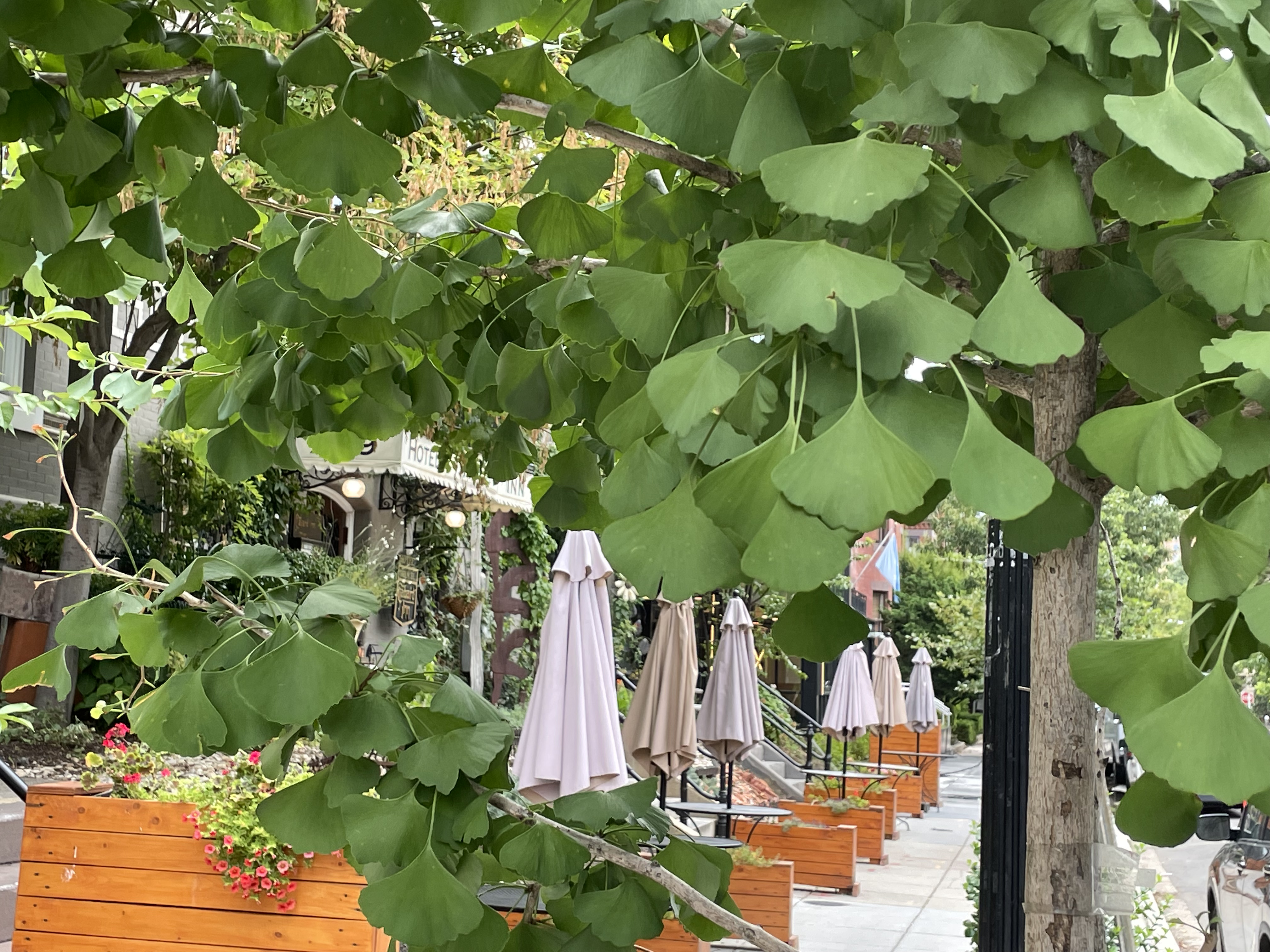I’m back! Sorry for the silence over the past two years. Last year was an awful, sad year for the world. We faced some challenges as well but by God’s grace there were also many blessings. Thankfully 2020 is done. And I want to start over.
Let’s start at the very beginning. Well, I could go all the way to Genesis but I think before the Jurassic era is good enough for me right now. Jurassic? Ya, 270 million years ago. Because in my zig-zagged train of thought I’m thinking of ginkgo trees.
Ginkgo–the name itself conjures all the romanticism and exoticism of the Far East–and that’s because the beautiful ginkgo tree has its origins in China and Japan. In Chinese, ginkgo is bai guo, white fruit. The word ginkgo is romanized from Japanese, which in Chinese translates to silver almond. However, Chinese almonds are not the same nut as ginkgo; and different from California almonds. Confusing.
Ginkgo trees have been on this planet since the pre-Jurassic era. These trees are considered living fossils; Wikipedia says some living trees in China are more than 600 years old and some in Japan are said to be 1500 years old. Early this year my husband and I learned some things about ginkgo trees.
Ted discovered interesting historic connections of the ginkgo with Washington DC. This tree with its art-inspiring, fan-shaped leaves can be found widely around the city. The photo featured is on N Street and if you drive around that area you’ll see some old trees. But there are smaller, younger ones, so I guess the city still favors them. I also found them in Brooklyn.
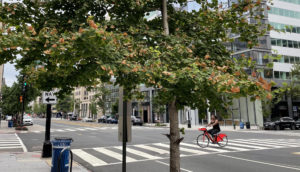
Ted read that in DC they planted them because they are hardy and beautiful. If you don’t think their delicate fan-shaped leaf is exquisite, wait until the fall when the leaves turn a brilliant golden yellow. They are simply gorgeous! See Ginkgo trees in the fall.
We went ginkgo sighting last week and found a tree in fruit. So cute, they are about the size of big cherries.
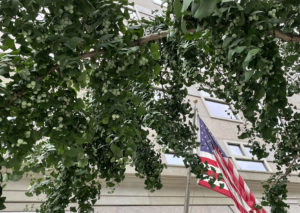
The wonder of ginkgo is not only that their fruit is edible, but it has been used for centuries for medicinal purposes in TCM (Traditional Chinese medicine.) Their leaves are also used. And of course, today’s health supplements claim that ginkgo biloba is good for brain.
BUT, there is a catch. When the fruit falls to the ground, they smell to high heavens. You can find the trees by their stench, which smells like throw-up.
A story about the smell of ginkgo is what piqued our interest on this tree a few months ago. One of Ted’s acquaintances who grew up in DC Chinatown in the 1950s said his mother made him go out with a bucket and collect the fruit. He’d bring them home, clean them up to sell to Chinese shops. The kids in the neighborhood laughed at him–making fun of the stink–until he collected money selling the fruit.
Ted shared this story with the MLK Library in DC and they might do a display about it. He asked if ginkgo nuts are sold in Asian stores. Back in the days, Chinese stores would sell the nuts in burlap bags and you just scooped as much as you needed. They came in their shell, and we’d break the casing with a hammer to get to the fruit.
Well, I searched for them in the Asian stores in the DC-Virginia area, and even checked New York Chinatown and couldn’t find the nuts. They only came frozen or canned. Ted got a package online but a small bag cost him $20!
I had a great idea. Why do you–I told Ted– go and look for the nuts in Chinatown where his friend had collected them as a kid? Those trees in DC are still there. Many of the trees have been planted for as long as the city has been here. Apparently it takes 20-40 years before it bears fruit.
Whadya know..Ted went foraging and see what he found?
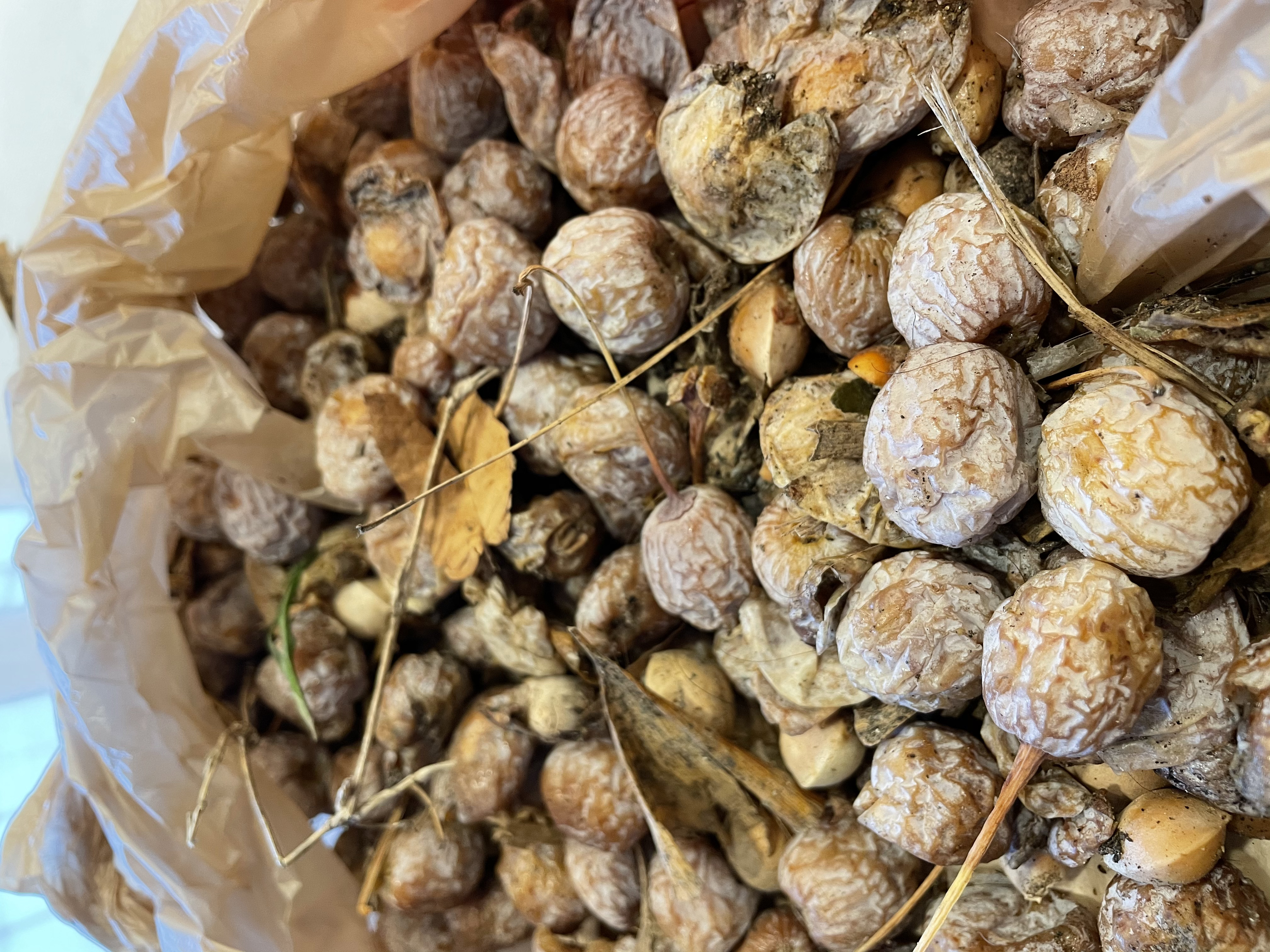
Oh yes, they ARE stinky! Ted soaked them and initially cleaned the ginkgo in the kitchen sink. But when he started a second batch I shooed him outside to finish cleaning his stash on the deck. The whole kitchen smelled like a cow had sauntered in, plopped her business and stomped over it.
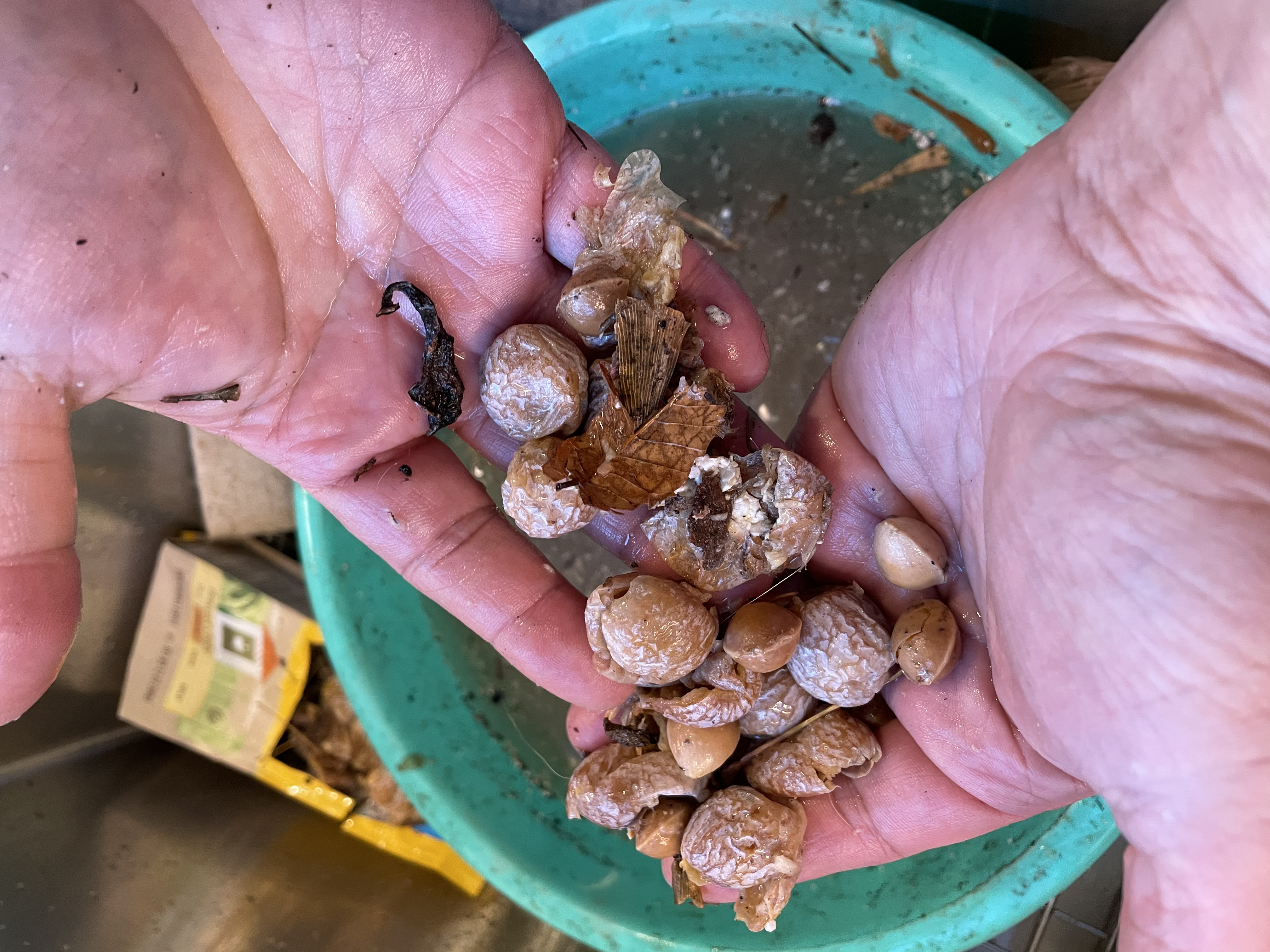
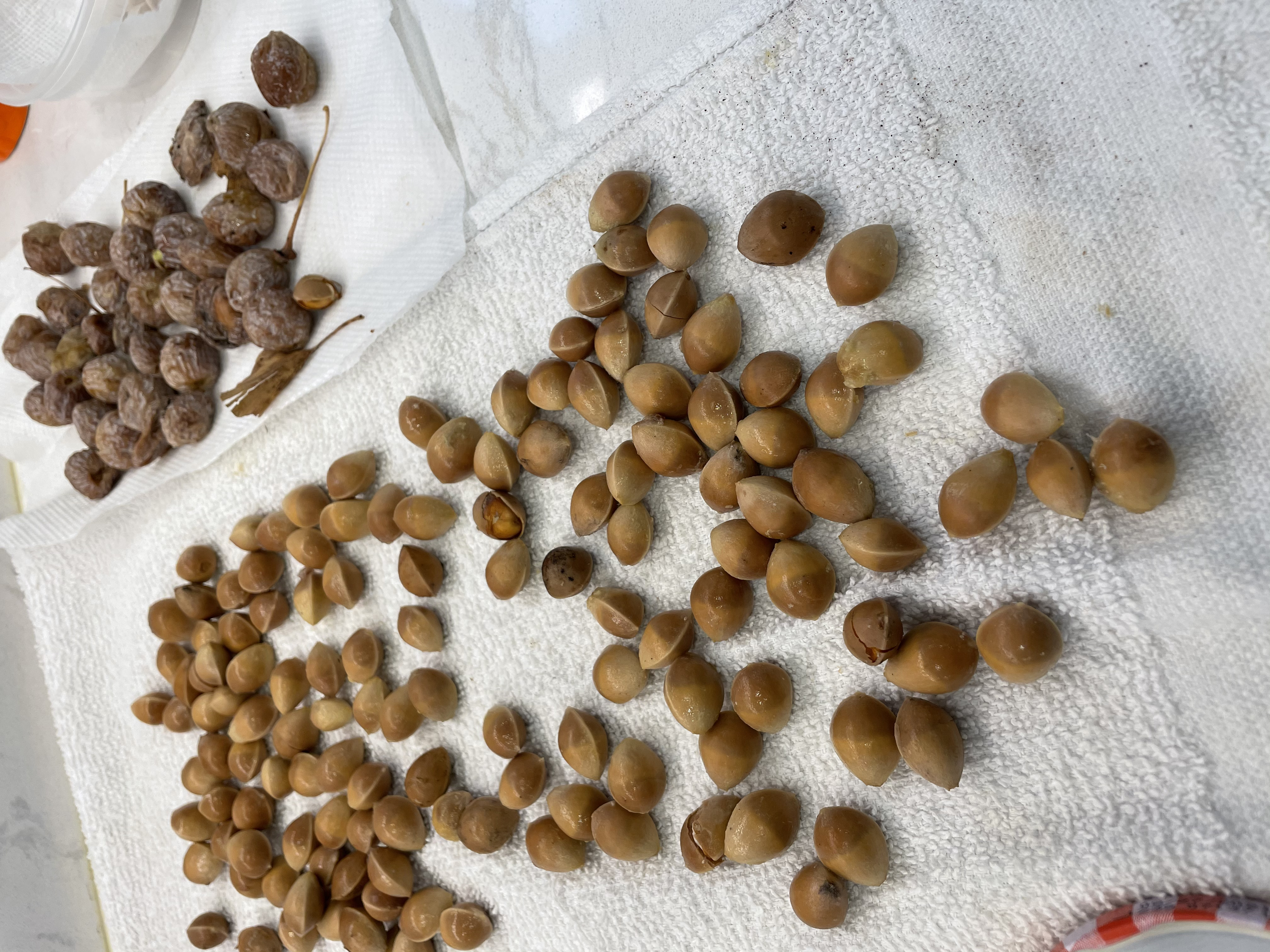
He foraged well. Here’s his cleaned stash of ginkgo nuts, next to the one bought online.
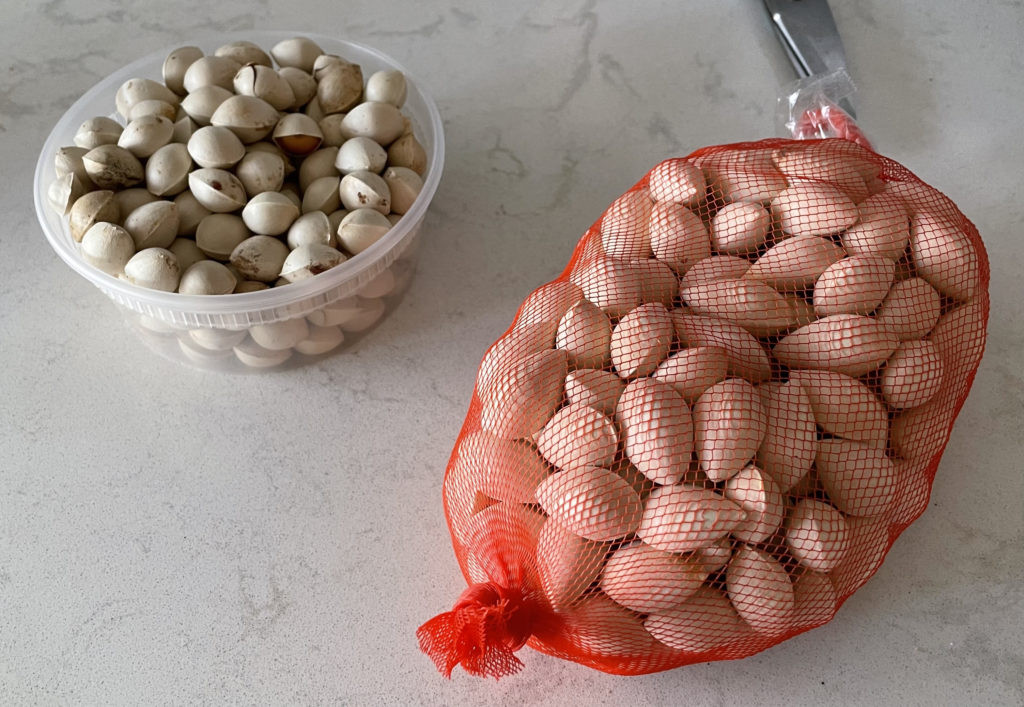
We got so excited about ginkgos that we decided we’d plant a ginkgo tree–a male one, female trees are hard to find–to establish some Asian identity in our back yard.
We delayed planting it this spring in case the cicadas got to our sapling. Although one wonders, could a tree with a 200-million-old history be threatened by an insect that comes up only every 17 years?
